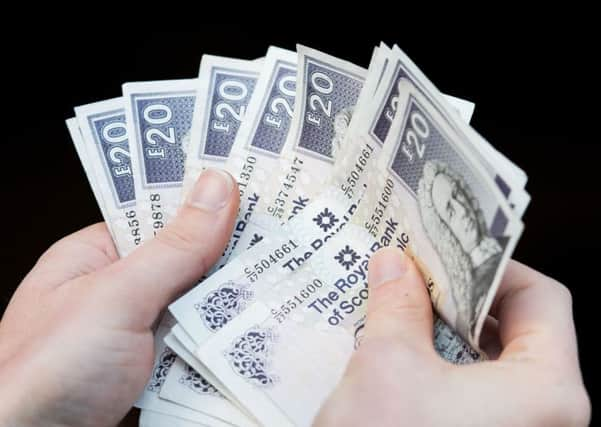Malcom Parkin: Quantitative easing only benefited the banks


However, it’s certainly not without effect, even though the nature of that effect has not been quite what was intended.
If we assume the population of the UK is 63 million, then that huge amount of money represents nearly £6,000 per man, woman and child. £24,000 for a family of four, yet I never saw my £6,000 or even any benefit from it. So where did it go?
Advertisement
Hide AdAdvertisement
Hide AdThe banking system was entrusted with the dispersal of this sum into the economy, but because they were already having trouble lending money in a recession, nobody wanted it. So, they first of all used it to patch holes in their own balance sheets, to fix bad debts, and then to cover some of their adverse commitments in the ‘casino’ operation euphemistically known as the derivatives market. Betting to you and me.
The thinking behind QE is the ‘trickle-down effect’ of course, but that wasn’t going to happen if the banks could not get the money into the economy in the first place, to stimulate it as needed and intended.
But they did of course find enthusiastic takers for that money in their own departments, who used it to speculate in the stock market, driving it to new heights in a recession. Bonuses were also no doubt paid for that pointless activity which provided a much needed illusion of fiscal wellbeing for government to talk about.
Finally, the already wealthy and favoured bank customers had a field day when they were simply given money and told to go off and create new markets in which to speculate for their own and the banks’ benefit.
So they bought and sold art, sculpture, wine and classic cars on a vast scale. Indeed, the price of classic cars and paintings, and other meaningless trivia, doubled during the QE period, while the yield from conventional investments fell, so that those seeking an income for retirement became worse off.
If the banks had simply injected that £375 billion into people’s bank accounts, it would have had a real effect in stimulating the economy. It could have been used to relieve private debt. The lives of many families could have been improved by £6,000 per person. There would also have been social benefit from the relief of debt anxiety. However, this would still have caused inflation and the devaluation of money already in circulation.
Another, and more effective method, would have been to throw the QE as actual cash out of helicopters, or simply leave it in bins on street corners.
That way it would certainly have gone directly into the economy, as opposed to making money for a favoured few, while the rest of us – who were supposed to have been the beneficiaries – missed the boat.
Malcolm Parkin is a retired business adviser. He lives in Kinnesswood, Kinross-shire.